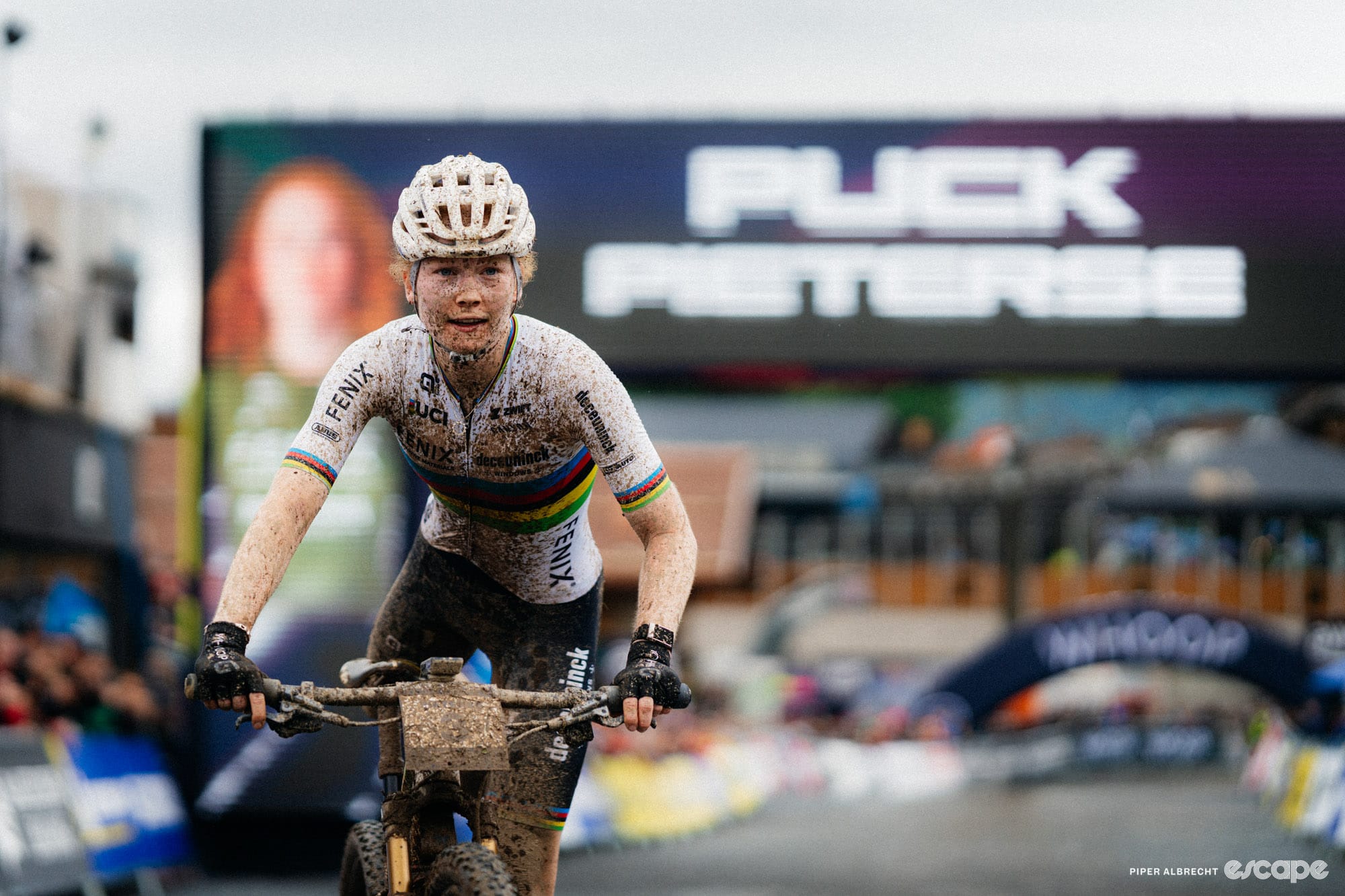Optimism still held on the Lidl-Trek bus as the front group crested the Paterberg for the final time. A headwind and just over 11 km remained for a solo Tadej Pogačar; the gap was just over 20 seconds. Four chasing one into that kind of wind—when the four are some of the strongest riders in the world, including two teammates—should have made it a tight contest. It was not.
“I can’t do anything else,” Mads Pedersen said. “We have to accept that he is the best cyclist ever.”
A wander through the bus paddock that snakes to the south of Sunday’s Tour of Flanders finish line, chatting with directors and watching faces react to what has just happened, and everything I see suggests there’s quite a lot of acceptance in the pro peloton this evening. Acceptance might be the word of the day. The major teams are proud, mostly, of how they raced. Few made major tactical missteps. Most executed roughly the way they had intended. They tried things, made the race interesting, but in the end, it didn’t matter. At some point, it’s down to legs, and that’s just something they’ve accepted.
Matteo Jorgenson rolled up to the press zone covered in salt. He is a man visibly on the precipice of a good vacation, done with his early Classics block, glycogen deficient. He came apart, he said, confirming what we watched in real time into the headwinds of the final 10 km. His team, fresh off a less-than-ideal showing at Dwars, knew what it had to do.
Like others, the tactic can be summed up in a single word: satellites. Get somebody up the road and it gives you options. They can ride for themselves, or they can work for a leader who bridges up; they can be an excuse not to pull in the group behind. Bike racing strategy often boils down to numbers, and the best way to have numbers in the finale is to give one or more teammates a head start on the favorites.

For Visma-Lease a Bike, the satellite was Tiesj Benoot. You don’t send your lowly domestiques up there; the satellite has to be a genuine threat. And Benoot is. He’s been in the top 10 at Flanders three times, in a career full of time spent at the pointy end of the biggest one-day races on the calendar.
Sometimes, the measure of a strategy's success or failure comes well before the finish line. If you took a snapshot of Sunday’s race just after the first key moment—the first pass up the Kwaremont—you’d see Pogačar charging ahead with Visma’s Wout van Aert on his wheel. Just behind was Jorgenson. Ahead was Benoot, waiting to be caught and to help. Pogačar pulled a select group out of a shattered peloton, and Visma had three riders left. An ideal scenario.
“We used our team in the wisest way possible,” Jorgenson said. “We weren’t strong enough.”
Over at Trek, things went even better. “I think we did an almost perfect race, actually,” said Daan Hoole, who worked his way into the day’s sneaky-strong break, off the front with the likes of Filippo Ganna and Stefan Küng.“The plan wasn’t specifically for me, but yeah, we needed to have somebody in this group,” he said after the race. “It just happened to be me, and then yeah, I just tried to hold on as long as possible and to be useful when Mads and Jasper eventually came across.”
Uh oh, here they come.
A satellite proves useful well before his leaders catch up. Long before Pedersen and Stuyven came up to Hoole, UAE Team Emirates-XRG was forced to expend considerable energy to keep the breakaway that contained Hoole, Küng, and Ganna in check. The gap hovered just over a minute as UAE’s António Morgado took enormous pulls on the front. Classics super-domestique—and an outside favorite for a Flanders win—Nils Politt was forced to get involved on the front as well. With the earlier crash of Jhonatan Narváez, UAE wasn’t able to put in the sort of multi-rider leadout we expected to see into the Kwaremont.
UAE managed to keep Pogačar where he needed to be and to keep the strong breakaway in check, but only just. And Pogačar was isolated as soon as he set off.
Did we do a good job with this story?



